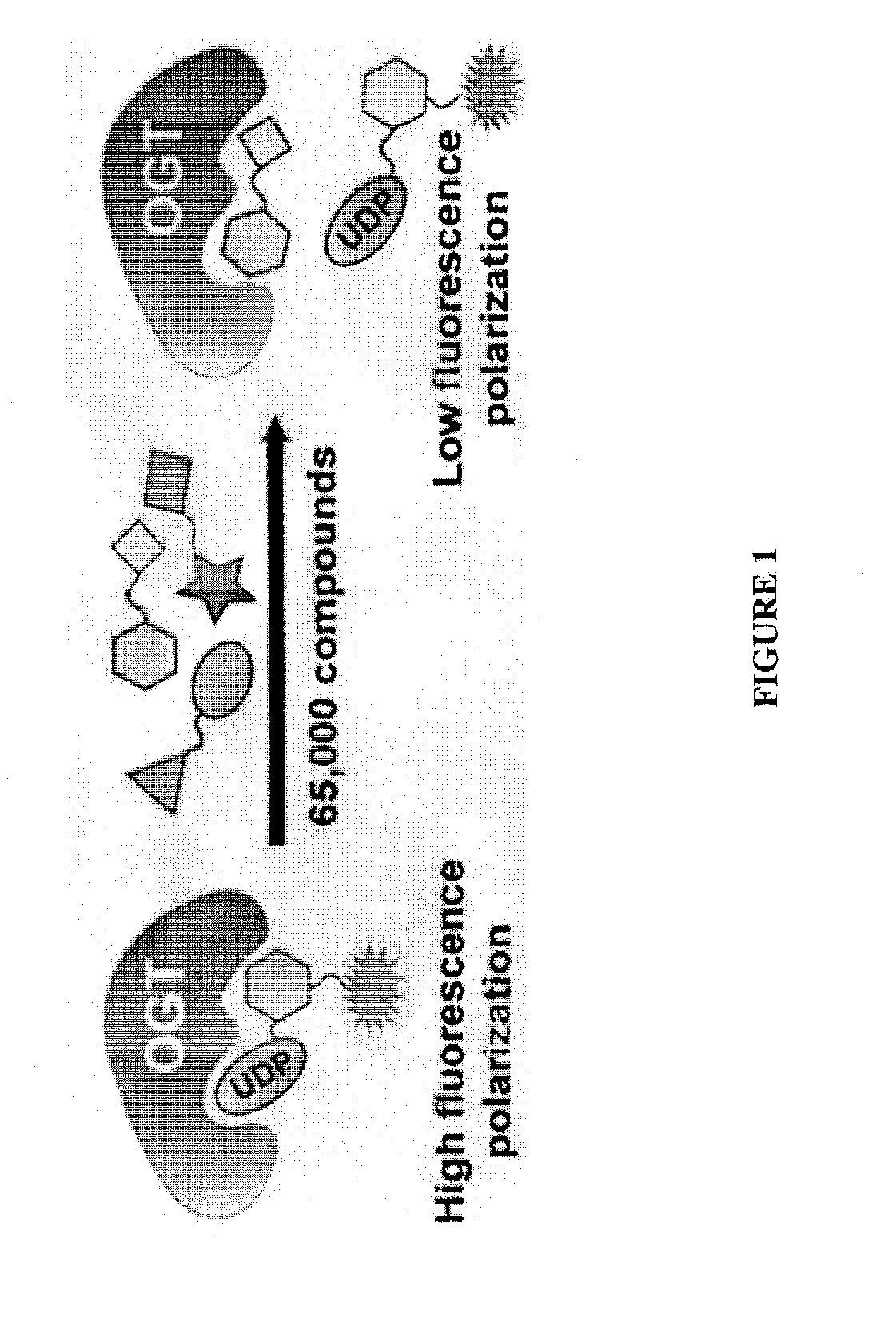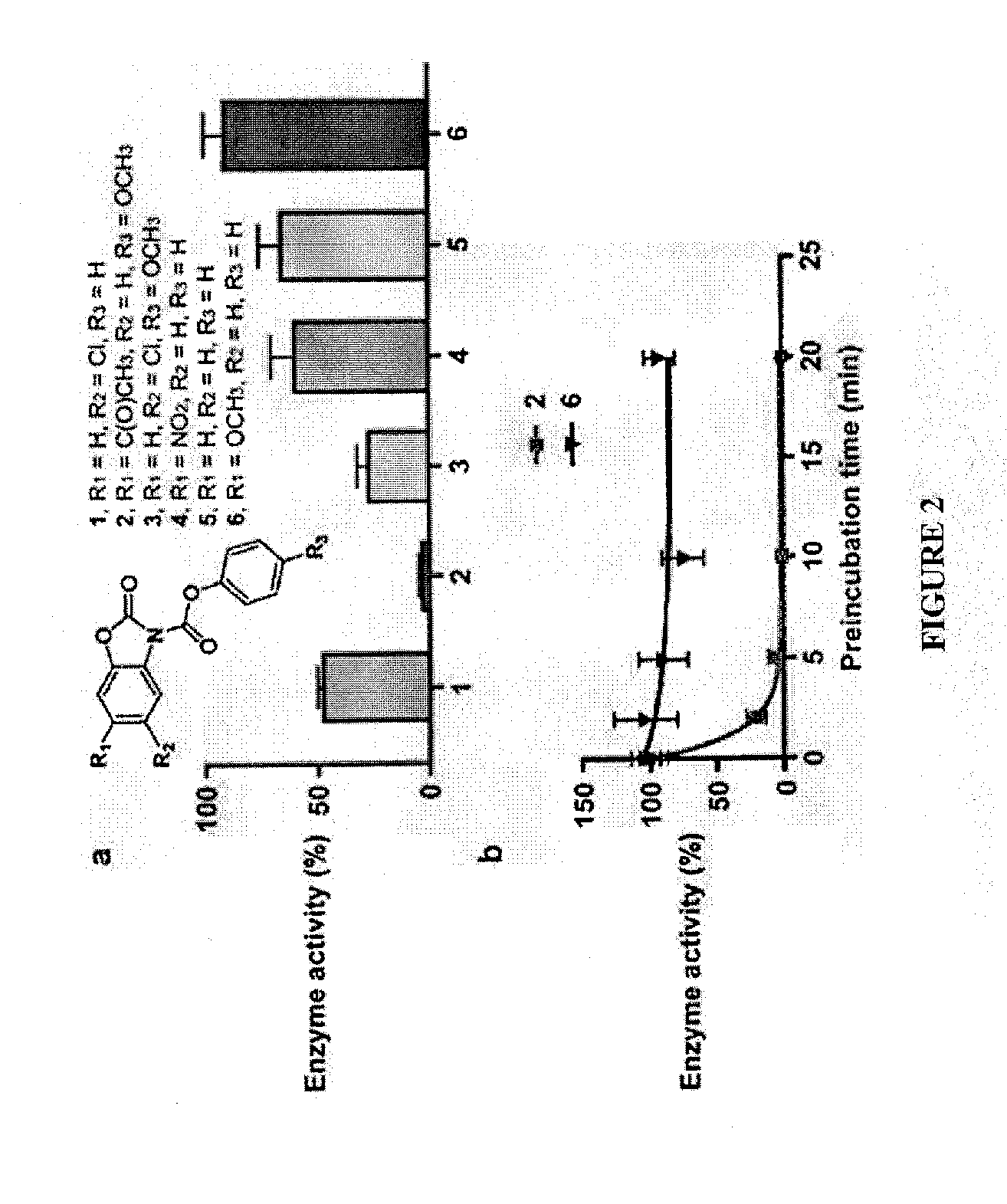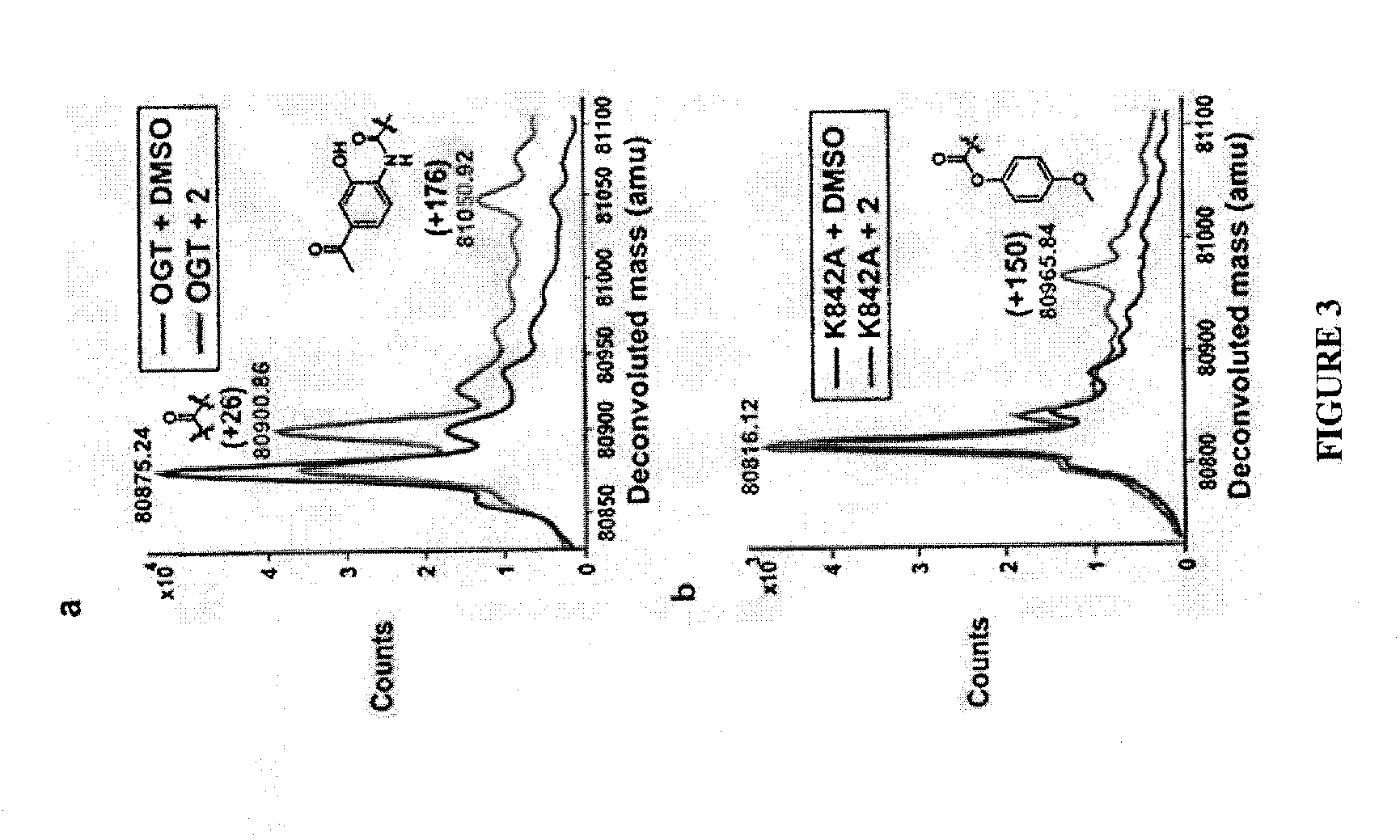Diphosphate mimetics and uses thereof
a technology of diphosphate and mimetics, applied in the field of diphosphate mimetics, can solve the problems of weak inhibitors, difficult study of them, and compound ineffective inhibition of gtfs, so as to reduce or avoid symptoms or causes of the condition, reduce or delay one or more symptoms, and improve the overall therapy
- Summary
- Abstract
- Description
- Claims
- Application Information
AI Technical Summary
Benefits of technology
Problems solved by technology
Method used
Image
Examples
example 1
Benzoxazolinone (BZX) Compounds Irreversibly Inactivate OGT
[0277]Compound (1) was identified in a high-throughput screen of 65,000 compounds (FIG. 1). See, e.g., Gross et al., J. Am. Chem. Soc. (2005) 127:14588-14589. It contains a dicarbamate moiety that links two aromatic groups. This compound features a conjugated chemical structure and both carbamate carbonyls are potentially reactive. See, e.g., Alexander et al., Chem. Biol. (2005) 12:1179-1187. Indeed, preincubation of OGT with compound (1) caused an irreversible loss of enzyme activity, consistent with covalent modification of the enzyme. A small panel of related compounds was made from commercially available building blocks in order to identify structural features that might improve potency. Time-dependent inactivation studies were carried out in which OGT was preincubated with a three-fold excess of each compound for 5 min, and the mixture was then diluted 100-fold into buffer containing UDP-14C-GlcNAc and the well-characte...
example 2
Two Covalent Adducts Identified Using Intact Protein Mass Spectrometry
[0279]To identify possible covalent adducts, we analyzed intact protein mass spectra of hOGT4.5 after a five-minute incubation with compound (2) at a 1:1 ratio. The hOGT4.5 construct has the same catalytic activity towards peptide substrates as the full length enzyme, but its N-terminal domain is truncated (Lazarus et al., Nature (2011) 469:564-567). The smaller mass of this construct is advantageous for MS analysis. Following incubation, the enzyme mixture was analyzed using LC-ESI-Q-TOF-MS. Two covalent adducts were detected (FIG. 3a). The major adduct had a mass increase of +26 Da, consistent with the incorporation of C═O and the loss of two protons. The minor adduct had a mass increase of +176 Da, and a possible structure for this adduct is shown (FIG. 3a).
example 3
Covalent Modifications Map to an Essential Catalytic Lysine Residue
[0280]To identify the side chains that react with compound (2), we analyzed tryptic digests of OGT in the presence and absence of the inhibitor using LC-ESI-MS / MS. The data files were searched against the SwissProt database using the MS / MS ion search feature of the Mascot search engine. There was a notable difference in the patterns of the digests for the control and inhibitor-treated proteins. A triply charged 34 residue peptide (S823QYGLPEDAIVYCNFNQLYKIDPSTLQMWANILK856) was observed in digests of incubated protein, which was not seen in the control sample. Based on the b and y ions generated from CID fragmentation, both the +26 and +176 modifications were assigned to the same active site residue, K842, which plays an essential role in catalysis (see below). K842 is a trypsin cleavage site and its modification blocks proteolysis, explaining the appearance of a new, longer peptide fragment in the treated protein. For...
PUM
| Property | Measurement | Unit |
|---|---|---|
| Composition | aaaaa | aaaaa |
Abstract
Description
Claims
Application Information
 Login to View More
Login to View More - R&D
- Intellectual Property
- Life Sciences
- Materials
- Tech Scout
- Unparalleled Data Quality
- Higher Quality Content
- 60% Fewer Hallucinations
Browse by: Latest US Patents, China's latest patents, Technical Efficacy Thesaurus, Application Domain, Technology Topic, Popular Technical Reports.
© 2025 PatSnap. All rights reserved.Legal|Privacy policy|Modern Slavery Act Transparency Statement|Sitemap|About US| Contact US: help@patsnap.com



